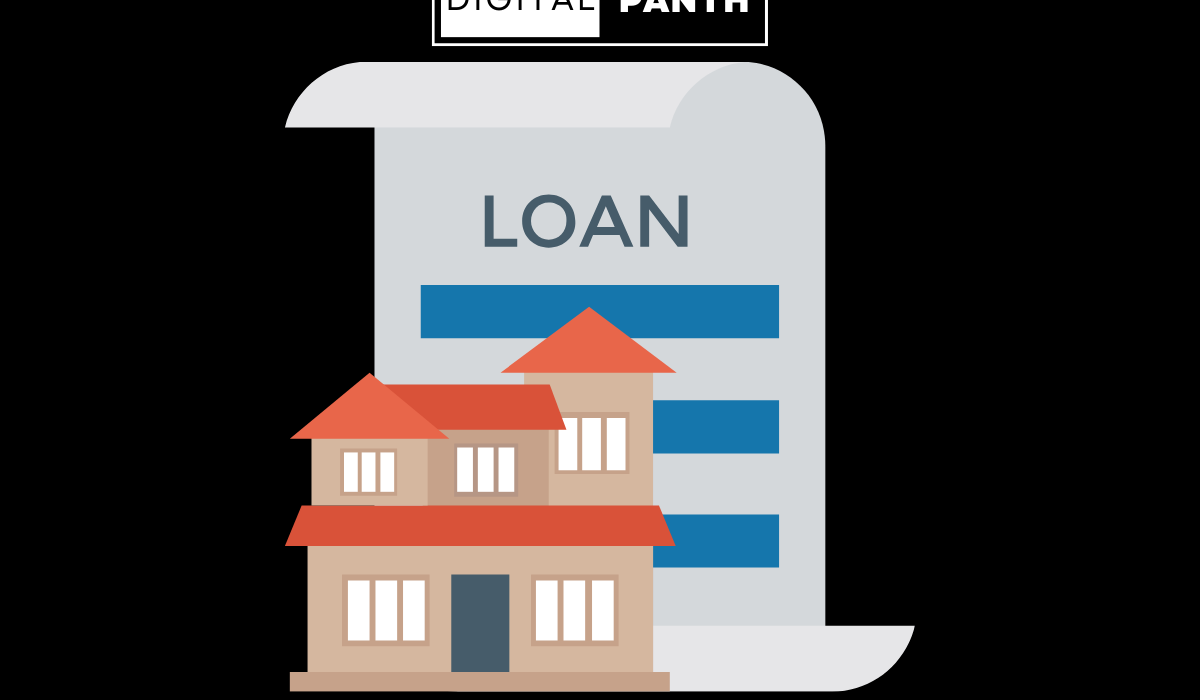Borrowers may quickly become perplexed due to the abundance of loan options on the market. If we talk about their similar features and benefits, most borrowers must know the distinctions between a home loan and a loan against property (LAP). They even frequently interchange these two terms.
However, a loan secured by real estate and a home loan are very different. Each product has unique benefits, whether a home loan versus LAP tenure or a home loan against LAP documentation.
What Is A Loan Against Property?
An individual or business person may obtain a loan against the mortgage of a residential or commercial property through a loan against property (LAP) arrangement. The property is pledged by the borrower as collateral for the loan amount, making it a secured loan.
Up to 70% of the property’s value may be possessed by the borrower when the lender’s necessary paperwork has been completed. An extended repayment time for a loan may be possible for the borrower on the lender’s policies. An individual’s property is used as collateral for a secured loan or LAP. Banks and non-banking financial organisations (NBFCs) both offer this type of loan facility. Usually, high costs like investments, business expansions, or house remodeling are the reasons behind taking this loan.
Those who need a large sum of money and have more assets to pledge as collateral can consider LAP as a wonderful choice. Debt consolidation into a single loan might also be advantageous for people seeking financial stability.
Legal Criteria for Loan Against Property (LAP)
For a loan against property, you have to be qualified to avail this. The criteria are:
- Possess the collateral property in India.
- Age requirements range from 25 to 65.
- A minimum of Rs. 25,000 monthly in consistent revenue from a job or business is required.
- Obtain the entire set of valid property records.
It is possible to apply for an LAP if your lender has verified that you match the requirements. In determining whether to approve or deny your application, the lender will evaluate both your creditworthiness and the property’s market value.
Essential Documents
For a loan to be approved by the lender’s policies and to safeguard both the lender and the borrower, specific documentation is required for an LAP application. The following documents are needed when applying:
- Identity Proof: A driving licence, passport, or any other documents issued by the government can be used.
- Proof of Address: A current utility bill, a property deed, or a commercial rental agreement will be required as address proof.
- Property Records: The sale deed, the certificate of no objection, and the property tax receipts are essential documents for applying for a loan against property.
- Evidence of Income: Bank statements, income tax returns, and the last three months’ pay slips are essential documents for loan processing.
How to Evaluate The Property For The Loan Amount
If the borrower is the legitimate owner, a loan against the property may be taken out against either self-occupied or rental residential real estate. A home, a business facility, or a plot of land are examples of real estate eligible for a Loan Against Property. Moreover, all legitimate owners of a piece of property must apply together for a loan secured by joint ownership.
The lending organisation dispatches an agent to determine the property’s market value upon receiving an application for a Loan Against Property. Banks and non-banking financial institutions usually only approve up to 40–60% of the property’s total market value. The property’s age is another factor that bankers consider before providing a final estimate.
The main differences between a Loan Against Property and a Home Loan:
Difference In Purpose: A home loan and a loan against property are mainly different. They are intended to be used for different things. A home loan is a type of loan that can be used to purchase a house or land or to renovate an already-existing residence. This loan is secured and has either a fixed or variable interest rate. Meanwhile, in Loan Against Property, the borrower can obtain a loan against already-owned property by taking out a loan secured by it. For the loan amount, the borrower must mortgage his property. After that, he can use the loan amount for large-ticket items like a medical emergency, your children’s college education, a lavish vacation, etc. The mortgaged property secures this loan.
Difference In Rate of Interest: Home loan interest rates and LAP interest rates differ significantly. Home loans often offer lower interest rates than loans secured by property. It is due to the perception held by lenders and financial institutions that borrowers are more likely to default on loans secured by real estate. By lowering the interest rate on home loans, the RBI and the Indian government work to make housing affordable for all inhabitants.
Difference in Loan to Value (LTV) of both the Loan Ratio: Before authorising the amount for a home loan, lenders will consider your income, credit score, employment stability, etc. Likewise, before approving the amount of a loan secured by your home, they will assess its value. When applying for a home loan, you can get credit for up to 90% of the property’s worth. You can only obtain credit for about 60% of the property’s market value when taking out a loan secured by it.
Difference in Repayment Tenure: The gap between LAP tenure and home loans is significant. The typical maximum term for home loans is 30 years. However, a loan secured by real estate can only be taken out for a maximum of fifteen years.
Difference in Documentation Procedure: There are significant differences in the documentation requirements for home loans and LAP. The process is comparatively more straightforward for home loans, with lenders typically finishing the paperwork and verification in about 15 days. However, the procedure regarding loans secured by real estate is more stringent and time-consuming. Lenders may ensure no disagreements over the property by thoroughly examining all relevant documentation, including the occupancy certificate and sale agreement.
Difference in Taxation of Home Loans and Loans Secured by Property: A house loan qualifies for Section 80C tax incentives. It enables you to deduct your loan’s principal amount by up to Rs. 1.5 lakh. However, LAP does not offer many tax benefits. Should you choose to take
How to submit an application for a loan secured by property
By taking the actions listed below, you can apply to a financial lender for a loan secured by property:
- Go to the financial lender’s website to begin the online loan application process.
- Following submitting your application, the lender’s customer service team will contact you and ask that you send the required paperwork.
- The lender will meticulously check the necessary documentation after you have submitted it to make sure everything is in order.
- The lender will examine the property connected to your loan application and verify the documents.
- The loan amount will be granted if your application is accepted and meets all requirements.
Conclusion
It is among the most affordable loans due to its lower interest rate than personal loans. In addition to the opportunity to liquidate your funds in the event of a significant expense, the 15-year loan term makes the monthly installments more comfortable. The bank could seize your belongings if you don’t repay the loan amount. The sole disadvantage of LAP is that if you adopt a systematic and deliberate approach, everything should work out fine.
FAQs
Is it possible to have a co-applicant for a loan secured by property? If so, with whom may a co-applicant apply?
Your spouse can apply as a co-applicant, increasing the loan amount. However, co-applicants must be co-owners if the property is co-owned.
How much is the processing cost for this kind of loan?
Bank-to-bank variations exist in the processing charge for loans secured by any property, although it typically hovers around 1 percent.
How is the interest rate on a loan secured by real estate determined?
Interest is computed using a daily reduction in balance. Your monthly outgo (equated monthly payment, or EMI) is substantially smaller than the interest on the annual decreasing balance.



Leave feedback about this